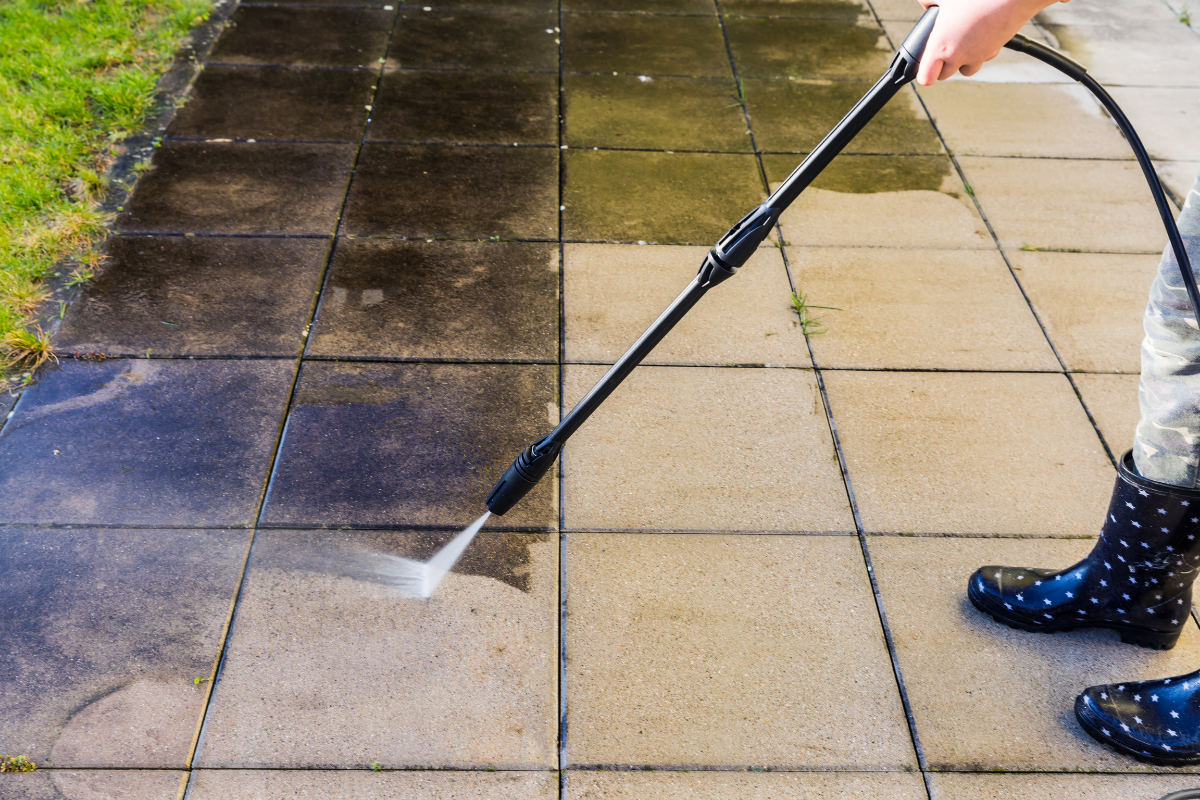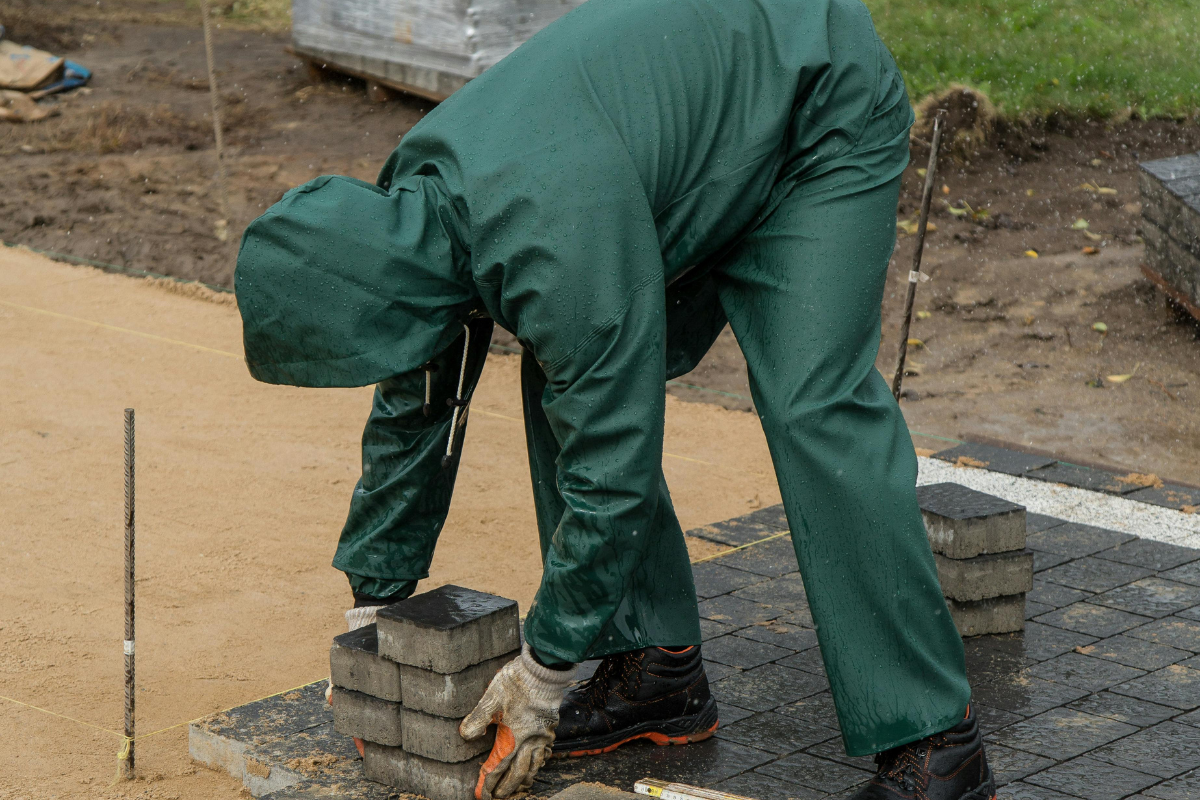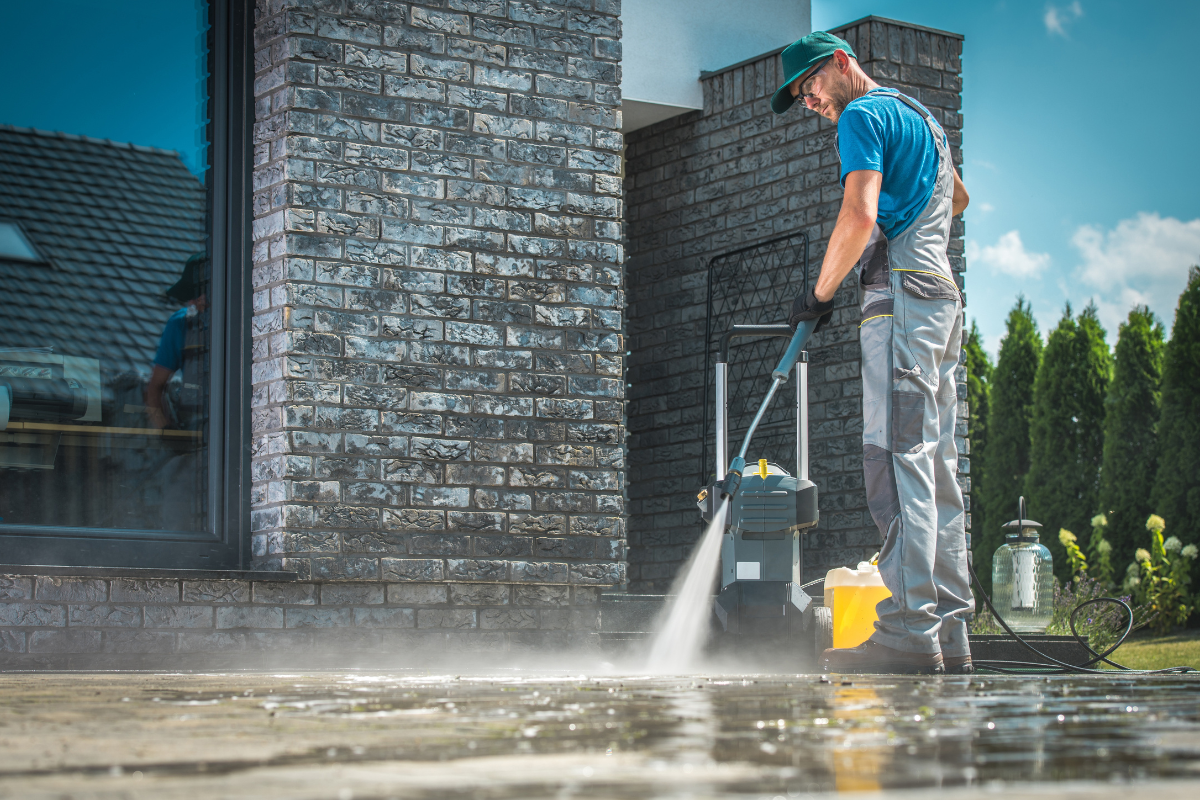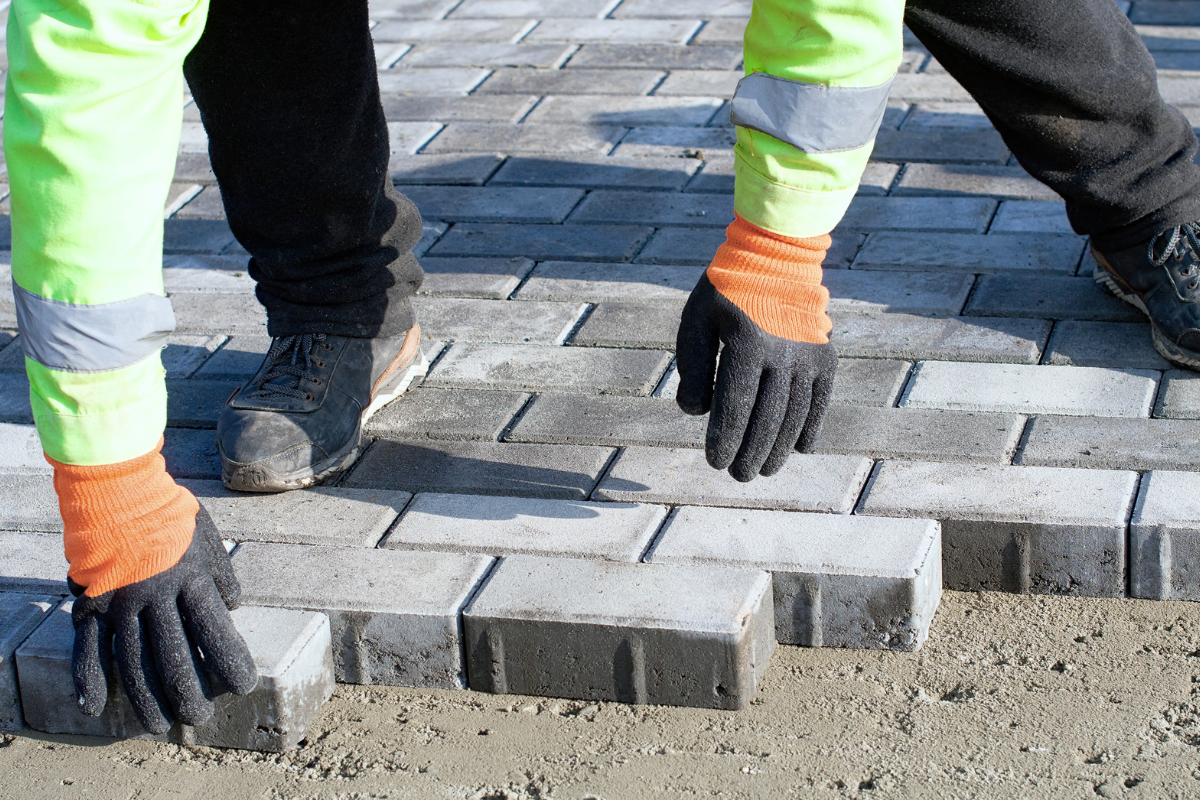
Driveway Pressure Washing Near Me: Neighborhood Compliance Tips



A clean driveway does more than freshen curb appeal. It prevents slip hazards, protects pavers and concrete from premature wear, and keeps runoff from dragging grime into storm drains or your garage. If you live in an HOA community or a municipality with stormwater rules, the stakes go higher. The way you approach pressure washing can trigger a friendly nod from a neighbor or a violation letter from the board. After years of handling pressure washing service work for paver driveways, concrete, and natural stone, I’ve seen the difference a little planning makes. Compliance is not a hurdle, it is a framework that keeps your property looking sharp without fines or friction.
What “compliance” actually covers
Neighborhood compliance tends to mean three things at once. Homeowners association standards, city or county stormwater and noise rules, and safety practices that a professional should follow even if no one is watching. HOAs usually care about appearance and scheduling. They want mold, weeds, and oil stains removed promptly, but they also want quiet mornings and no runoff staining common sidewalks. Municipalities care about what goes into the storm drain. In many places, it is illegal to discharge wash water containing detergents, oils, or sediment into the street or gutter. Safety sits beneath it all. Incorrect nozzle choice or pressure can scar concrete, scarify pavers, or drive water under expansion joints and into your garage.
In practical terms, a compliant patio paver sealing job controls water and debris, uses the right equipment, and respects the clock. Professionals do this as routine. If you plan to DIY, you’ll want to adopt the same habits.
The HOA lens: what boards actually look for
HOA documents vary, but most share common patterns. Boards want the neighborhood to look cohesive and well kept, and they write enforcement letters when driveways stain or grow algae. When you search “driveway pressure washing near me,” you’ll find contractors who know these dynamics. The ones who keep repeat customers understand board expectations and how to minimize disruption.
Scheduling is sand locking pavers a big piece. Many HOAs ask for weekday work during business hours. They often prohibit early morning noise on weekends. Some require advance notice for contractors. When water runs across sidewalks into shared drains, boards care about sediment lines and slippery residue. If your driveway slopes toward a common area, you should anticipate extra containment steps such as sandbags or drain socks.
Appearance goes beyond clean concrete. For pavers, boards want even color and clean joint lines. Uneven washing can leave cheetah spotting, and careless wand work can flush joint sand. That is one reason paver cleaning in Lutz and similar communities often pairs with paver sealing. After washing and sealing, the surface resists stains longer and the HOA hears fewer complaints.
Stormwater and local rules: what can’t go down the drain
It often surprises homeowners that it is not just soap that regulators worry about. Even “plain” driveway runoff can carry oil, brake dust, herbicide residues, and sediment. Many counties treat storm drains as direct pathways to lakes and bays, which means anything you wash off can end up in the water untreated. That is why some cities require capture, filtration, or redirection to a grassy area where soil can filter contaminants before water reaches the curb.
For context, I’ve worked neighborhoods where inspectors check for suds or visible sheen in gutters after contractors leave. A faint line of silt by the drain can be enough to trigger a warning. The easiest way to avoid this is to manage water on the driveway rather than letting it roam. Surface cleaners paired with lower flow, controlled passes, and targeted rinses reduce runoff. Bio-based cleaners used sparingly and neutralized afterward help too, although remember that “biodegradable” does not automatically mean drain-safe.
Noise rules come into play as well. Mid-tier gas units can run at 70 to 90 decibels. If your community has quiet hours after 7 p.m. and before 8 a.m., plan your work in a narrower window. Electric units are quieter, though often weaker, which can extend work time. A professional crew balances both factors with equipment sized to clean efficiently without shouting across the block.
Surface specifics: concrete, pavers, and the quirks in between
Concrete looks tough, but early mistakes can etch it permanently. A 0-degree tip at close range can carve a line you will never unsee. New concrete less than a year old deserves extra care because the surface can still be curing and more prone to scarring. I like to stay in the 2000 to 3000 PSI range for most residential slabs, paired with a 15 to 25 degree fan tip or a surface cleaner. Dwell times with detergents do more work than extra pressure. Let chemistry soften the grime, then rinse off the lift.
Pavers introduce their own calculus. Interlocking concrete pavers, travertine, and clay brick respond differently to water, heat, and chemical cleaners. Over the years, I have found three recurring mistakes that invite HOA complaints. First, aggressive wanding that blows out joint sand. Second, uneven passes that streak across the field. Third, leaving how long does paver sealer last behind efflorescence patterns that become more visible when pavers dry.
When homeowners ask about paver cleaning Lutz or nearby areas with sandy subgrades, I recommend a controlled surface cleaner, lower PSI, and moderate flow to float dirt upward without excavating the joints. After cleaning, plan for re-sanding and, if you want longer protection, paver sealing. A quality paver sealer locks in joint sand and shields against UV and stains. It also deepens color, which many HOAs view as an upgrade rather than a distraction. If you type “paver sealing near me,” look for contractors who explain whether they use solvent or water-based products, and why.
The washing and sealing sequence that avoids rework
A good sequence saves time and reduces callbacks. You can break it down into assessment, pretreat, wash, rinse management, dry time, sanding if needed, and sealing. Homeowners often rush the dry time, which leads to a cloudy sealer or trapped moisture. In humid climates, I want at least 24 to 48 hours of dry weather before applying a paver sealer. After a heavy wash, pavers can hold moisture longer than you expect, especially in shaded areas.
A misstep here can turn a spotless job into a blotchy problem. Sealers that trap moisture may blush or haze, and fixing that usually involves stripping and starting over. That is costly and frustrating. Professionals use moisture meters or a simple taped plastic test to check whether the pavers are dry enough. Patience here is more than cosmetic. It affects longevity and compliance because hazy surfaces often mean more aggressive corrective cleaning, which risks runoff issues a second time.
Water control, the heart of compliance
On a sloped driveway, water behaves like a stubborn guest. It seeks the path of least resistance, which often heads toward the sidewalk. The difference between compliant and non-compliant work is how you corral that flow. Weighted drain covers, temporary berms, and vacuum recovery systems form a toolkit. You do not always need all three, but you should have a plan. If you are working near a storm drain, a simple polyurethane drain cover can keep water out of the grate while you redirect it to a landscaped area for infiltration. The goal is not to hoard water on the driveway, rather to spread and absorb it where the soil can filter.
Surface cleaners matter too. A 15 to 20 inch surface cleaner with dual nozzles keeps water under a skirt and reduces splatter. It cleans faster with less mess, which means fewer dirty sidewalks and fewer neighbor complaints. Follow with a gentle rinse, sweeping water away from the street. If you must use detergents, choose ones approved for outdoor use, read the dilution ratios, and avoid overapplication. The less chemistry you release, the easier it is to keep water compliant.
When to hire a pressure washing service
The line between DIY and professional is not about pride. It is about equipment, time, and risk tolerance. If your driveway is small, relatively flat, and lightly stained, a consumer-grade electric unit and a weekend morning may be enough. If you have a steep slope, heavy oil spots, or pavers that need joint stabilization, hire a pro. They arrive with paver sealing services recovery mats, rotary surface cleaners, degreasers that work at low concentrations, and the judgment to know when to stop. Cleanup habits separate the pros. A thorough crew will rinse down the street-facing curb, check for overspray on garage doors or cars, and leave the sidewalk safer than they found it.
Searches for driveway pressure washing near me will produce a mix of handymen and specialists. Read more than price. Ask how they manage runoff, whether they carry insurance, and what their plan is if the HOA objects to their schedule. If you intend to seal pavers afterward, ask whether the same crew can handle washing and sealing. A single accountable vendor reduces miscommunication about dry times or sand specs.
The chemistry behind clean, and why it matters for compliance
Oil and algae are not cousins. They respond to different chemistry. Degreasers rely on surfactants and sometimes solvents to lift petroleum from the pores of concrete. Algae and mildew respond to milder oxidizers or quaternary ammonium compounds. Bleach solutions are common, but they carry corrosion risks for nearby metals, and they are a red flag if they run off into storm drains. The experienced approach uses targeted spot treatments for oil and controlled, diluted algaecides for bio growth. Let cleaners dwell for the label’s recommended time, then rinse lightly. More product is not better, better control is better.
For pavers, solvent-based sealers penetrate deeply and enrich color, though they can darken surfaces more. Water-based sealers off-gas less and are easier to apply in tight windows, but they often require drier substrates. A paver sealer labeled breathable reduces the risk of moisture entrapment, helpful in coastal areas. If you plan paver sealing, clean with the end in mind. Avoid any cleaner that leaves residues that can interfere with bonding. Rinse thoroughly, then allow time to dry. When in doubt, speak with a supplier who knows your specific paver type.
A realistic look at costs and timelines
A typical two-car concrete driveway might take 1 to 2 hours to clean thoroughly using a professional surface cleaner and minimal chemistry. Add time for setup, containment, and cleanup, and half a day is reasonable. If you add paver sealing, expect the project to stretch across two dry days. Day one for paver cleaning, rinse management, and drying. Day two for sanding joints and applying the sealer, plus cure time. Costs vary by region, but you will see ranges from a couple of hundred dollars for simple concrete cleaning to four figures for a large, intricate paver drive with washing and sealing. If a contractor quotes unusually low for sealed pavers, ask what product and how many coats they plan to use. A single thin coat often looks good for a month, then fades or wears unevenly.
Edge cases that trip people up
Snowbelt residents sometimes see etching patterns from deicing salts. Pressure washing alone will not fix salt damage. You can clean the surface to remove residue, but the spalling is structural. Sealers designed for freeze-thaw protection help prevent future damage, but they cannot reverse it.
Newly installed pavers may show efflorescence, the white mineral bloom that creeps up as moisture carries salts to the surface. Washing can remove it temporarily, but it tends to return until the salts are exhausted. Dedicated efflorescence cleaners can help, though they require careful neutralization and thorough rinsing. If you plan to seal, wait until the bloom stabilizes or use a breathable paver sealer recommended for that condition.
Oil stains older than a year can be stubborn. Expect partial lightening, not magic. Multiple applications of poultice or enzymatic degreasers may get you to acceptable, not pristine. Set expectations with your HOA if a permanent shadow remains. Often, once the area is clean and sealed, the stain reads as a faint discoloration rather than an eyesore.
Communicating with your HOA like a pro
Most board members appreciate a heads-up. A short email with the date, time window, and contractor contact reduces the risk of a compliance note taped to your door. stain removal Mention that the crew will control runoff and work within quiet hours. If your driveway slopes toward a common drain, include one sentence about the containment plan. This signals respect and usually prevents problems.
If a neighbor complains mid-job about noise or water, listen before you defend. Offer to pause for a few minutes if they are stepping out with a sleeping baby. Small gestures keep good will intact. In my experience, nine out of ten conflicts dissolve when the crew shows they are willing to adjust for a few minutes. The work still gets done.
DIY techniques that meet professional standards
If you prefer to do it yourself, a few habits make your work look like it came from a pressure washing service:
- Pre-wet landscaping and keep plants rinsed during chemical use. Then post-rinse to dilute any stray droplets.
- Work in manageable sections, overlapping passes by a few inches for uniformity. Avoid choppy, short strokes that create tiger striping.
- Keep the nozzle or surface cleaner moving at a steady pace. Slow down on stains, speed up on clean areas, rather than ramping pressure.
- Use containment on slopes. A simple foam berm or sandbag line can direct water toward grass. Do not rely on a single towel by the curb.
- Rinse across, not down, towards the street. Gentle, cross-slope rinses allow water to settle into soil rather than doming into the gutter.
That is one list. Everything else belongs in your muscle memory. The goal is even cleaning, minimal chemistry, and clean edges. You can borrow a moisture meter to check pavers before sealing. If you plan to apply a paver sealer, read the label twice, then do a small test area behind a trash bin to see color enhancement and sheen before you commit.
Choosing a partner for washing and sealing
Not all contractors who clean driveways also seal pavers well. When you search paver sealing near me, filter for crews that take moisture readings, specify joint sand type, and disclose the brand and solids content of the sealer. Ask about warranty terms in plain English. A six to twelve month workmanship warranty is common for sealing, with reasonable carve-outs for tire scuffing or heavy oil. A contractor who explains the difference between film-forming and penetrating sealers is likely to make a better match to your surface. If you have travertine, you want a different approach than for tumbled concrete pavers.
A word on timing. Avoid sealing in the hottest part of the day. High surface temperatures flash solvents too quickly and can trap bubbles. Early morning after the dew lifts or late afternoon with dry air is better. If your community irrigates daily, coordinate to shut sprinklers off during the seal and cure window. Sprinkler mist can spot a fresh sealer and cause a milky cast that looks like fog trapped under glass.
What success looks like a week later
A compliant, quality job looks almost quiet. The driveway reads clean without stripes, edges along the lawn are crisp, and there is no chalky residue on the sidewalk. If you sealed pavers, the color feels richer but not plasticky. Water beads lightly at first rain, but the surface does not feel slick. The curb line remains clear, and the storm drain shows no telltale silt stain. Your HOA does not send a letter, your neighbor compliments the look, and you walk across the driveway without tracking grit into the garage.
The next month matters too. A good seal or thorough clean slows algae regrowth. Gutter drips and tire tracks leave lighter marks that rinse off with a hose. You schedule maintenance on a realistic cadence. In humid climates, that might be every 8 to 12 months for a quick wash, every 2 to 3 years for resealing pavers, depending on traffic and sun exposure. In drier areas, you can stretch that timeline.
Practical safeguards that avoid surprises
I keep a mental checklist before every driveway job. Weather window, runoff plan, equipment condition, cleaner selection, and neighbor impact. If wind speeds jump above 15 miles per hour, overspray risk rises, especially with wands. I attach splash guards for tighter control. If a driveway has hairline cracks, I avoid aggressive tips that could widen them. For properties with sensitive landscaping, I run a low-flow pre-wet and keep a pH-neutralizing rinse on hand if using acidic cleaners for efflorescence.
Insurance and permits live in the background. A legitimate pressure washing service carries general liability, often at 1 million dollars, and workers’ comp for crews. Some cities require a mobile washing permit if you use water recovery systems or discharge to sanitary sewer after filtration. If you are a homeowner, you do not need all that paperwork, but you benefit from hiring those who do.
Bringing it all together
Compliance comes down to respect. Respect for water, for neighbors, for the materials under your feet, and for the rules that protect the watershed. Whether you handle the work yourself or hire a pro, the standards are the same. Keep water under control. Match pressure and chemistry to the surface. Give sealers the time they need. Communicate with your HOA before and after. A clean driveway should not come with a fine or a frown. Done the right way, it sets a quiet example on your street, and it lasts.
If you are deciding between a quick rinse and a full-service plan, consider the long game. A thorough clean followed by paver sealing protects your investment and reduces future effort. When you type driveway pressure washing near me or paver sealing near me, look past slogans. Ask practical questions about water capture, product choices, and scheduling. The answers will tell you what kind of experience you can expect. And when the job finishes with dry sidewalks, tidy edges, and a driveway that sheds rain like a new roof, you will know you chose well.
Bulletproof Pavers
Address: 1523 Green Meadow Dr, Lutz, FL 33549
Phone: (813) 401-0693